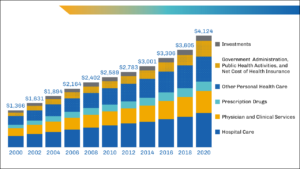The Landscape of Medical Care in the USA: Trends and Challenges
Introduction:
The United States stands at the forefront of medical innovation and research, boasting world-class hospitals, cutting-edge technology, and a diverse array of healthcare professionals. However, alongside these advancements, the American healthcare system grapples with various challenges, including access disparities, rising costs, and ongoing debates over healthcare policy. This article delves into the multifaceted landscape of medical care in the USA, examining key trends, pressing issues, and potential avenues for improvement.
Healthcare Infrastructure and Technology:
The USA possesses a robust healthcare infrastructure, comprising hospitals, clinics, research institutions, and pharmaceutical companies. Major academic medical centers like the Mayo Clinic, Cleveland Clinic, and Johns Hopkins Hospital lead the way in patient care, research, and medical education. Moreover, advancements in medical technology, such as robotic surgery, telemedicine, and precision medicine, continue to revolutionize healthcare delivery, enhancing efficiency, accuracy, and patient outcomes.
Access and Disparities:
Despite its advanced healthcare system, access to medical care remains a significant issue in the USA. Millions of Americans lack health insurance, limiting their ability to seek timely treatment and preventive care. Moreover, socioeconomic factors, including income, education, and race, contribute to disparities in healthcare access and outcomes. Rural communities often face challenges in accessing medical services, with shortages of healthcare providers and limited infrastructure exacerbating disparities.
Healthcare Costs and Insurance:
Healthcare costs in the USA are among the highest globally, posing a financial burden on individuals, families, and the economy as a whole. The rising cost of medical care, prescription drugs, and health insurance premiums strains household budgets and inhibits access to essential services for many Americans. The complexity of the healthcare system, including the role of private insurers, government programs like Medicare and Medicaid, and the lack of price transparency, further complicates efforts to control costs and improve affordability.

Healthcare Policy and Reform:
Debates over healthcare policy and reform are perennial in the USA, reflecting differing ideologies, priorities, and interests. Efforts to expand access to healthcare, such as the Affordable Care Act (ACA) enacted in 2010, have faced staunch opposition and ongoing challenges. Proposals for universal healthcare coverage, Medicare for All, and other models seek to address gaps in coverage and control costs, but political gridlock and ideological divisions continue to hinder significant reforms. Meanwhile, initiatives to promote value-based care, population health management, and preventive medicine aim to improve quality, efficiency, and outcomes within the existing framework.
Future Directions and Opportunities:
As the USA grapples with the complexities of its healthcare system, there are opportunities for innovation, collaboration, and reform. Embracing technology-driven solutions, such as telehealth, artificial intelligence, and data analytics, can enhance access, efficiency, and personalized care. Addressing social determinants of health, such as poverty, education, and environmental factors, is essential for reducing disparities and improving population health outcomes. Moreover, fostering interdisciplinary collaboration, promoting preventive care, and empowering patients to take an active role in their health can pave the way for a more equitable, sustainable healthcare system in the USA.
Conclusion:
The landscape of medical care in the USA is characterized by both remarkable achievements and persistent challenges. While advancements in technology, research, and clinical care continue to drive innovation and improve patient outcomes, access disparities, rising costs, and policy debates underscore the need for ongoing reform and collaboration. By addressing these challenges comprehensively and embracing opportunities for change, the USA can move closer to realizing its vision of a healthcare system that is accessible, affordable, and equitable for all.

